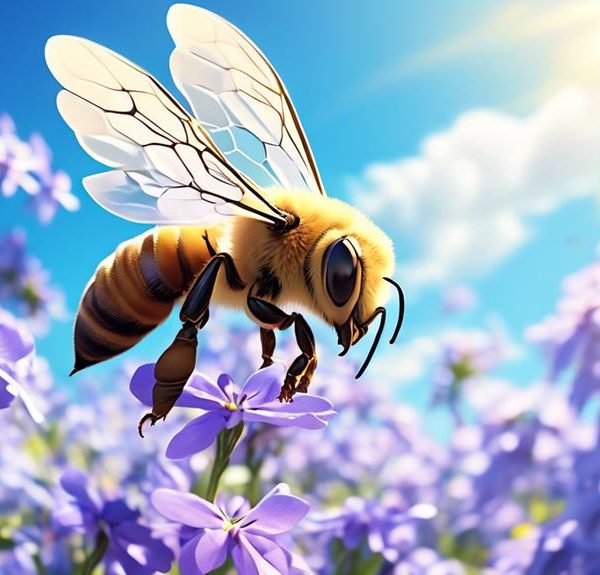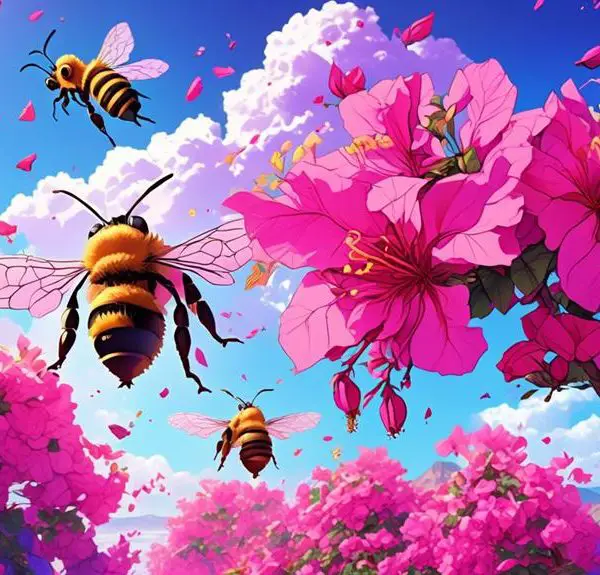Uncover the fascinating link between bees and bottlebrush plants, a discovery that could transform your approach to gardening.
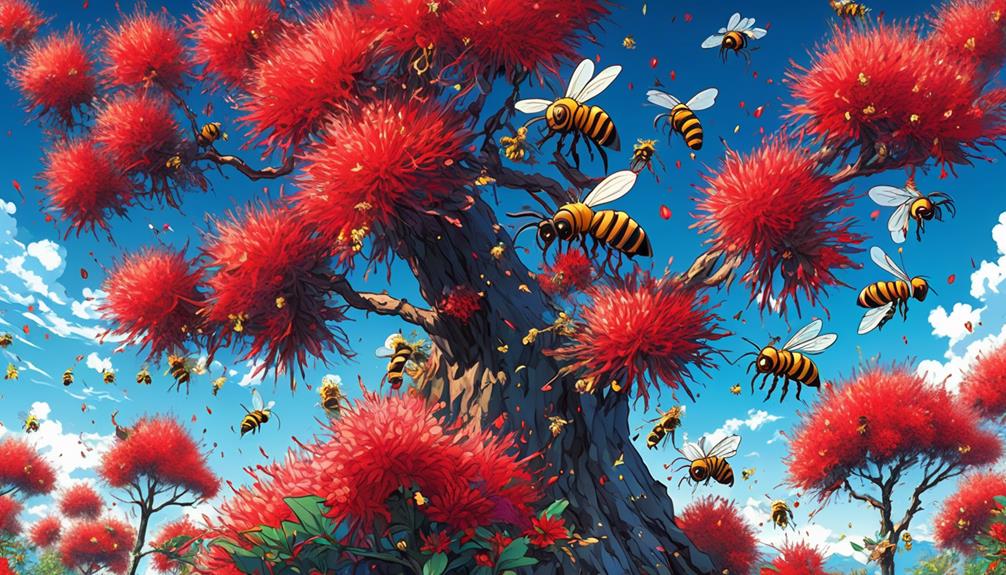
Do Bees Like Bottlebrush
In the time of dial-up internet, the question of whether bees are attracted to bottlebrush plants might have been considered obscure. Now, as you delve into the world of pollination and gardening, it's a query that's not only relevant but essential.
Do bees, those industrious pollinators, really like the spiky, vibrant blooms of the bottlebrush? While we know bees are drawn to many types of flowers, the relationship between bees and this particular plant is intriguing. Without giving away too much, let's just say the answer might influence your decision on which plants to include in your backyard.
Key Takeaways
- Bees are attracted to bottlebrush flowers due to their high nectar productivity and distinct shape.
- Bottlebrush flowers provide a consistent food source for bees, contributing to their foraging efficiency and colony productivity.
- The mutualistic relationship between bees and bottlebrushes supports biodiversity and the growth of these plants.
- Considering bees' preference for bottlebrushes can inform decisions in gardening, beekeeping, and conservation practices.
Understanding Bees' Attraction to Flowers
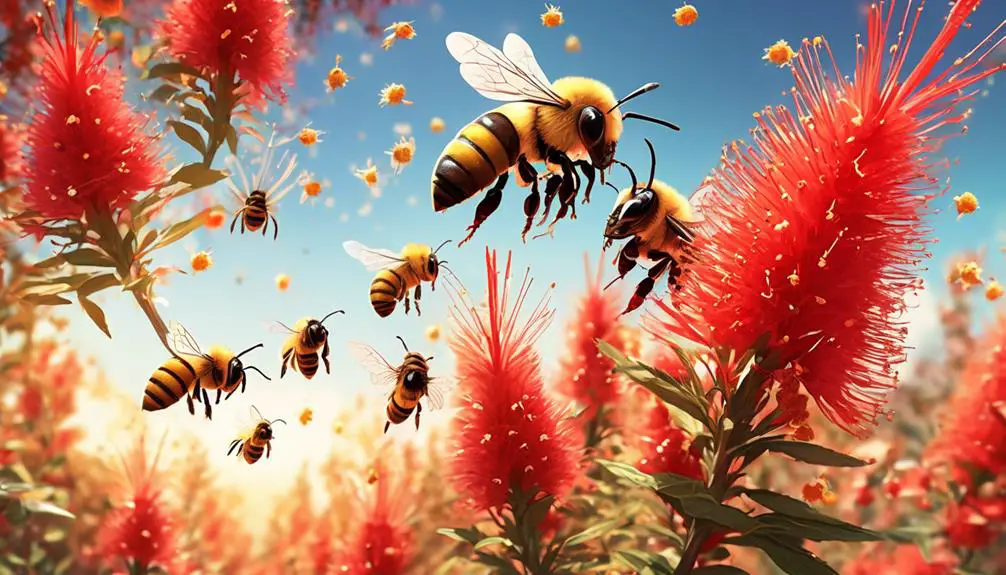
To understand why bees might be attracted to bottlebrush flowers, it's crucial to delve into the intricate relationship between these insects and the floral kingdom, a bond built on mutual benefit and honed by millions of years of evolution. As a bee hovers over a bottlebrush flower, it's not just the vibrant color that entices them, but the promise of nectar – a high-energy food source.
The shape and structure of a flower also play significant roles in attracting bees. Bottlebrush flowers, with their cylindrical form and abundance of small, individual blossoms, are ideal for bees. They can easily move around the flower, collecting pollen on their bodies as they feed. This pollen sticks to their fuzzy bodies and is transferred to the next flower they visit, facilitating cross-pollination.
Moreover, the bottlebrush flower emits a distinctive fragrance that acts as a powerful olfactory lure for bees. The flower's scent, combined with its rich nectar and pollen supply, make it almost irresistible to these insects. Therefore, understanding bees' attraction to flowers isn't just about color and scent, but also about the evolutionary tactics these plants use to ensure their survival.
The Alluring Bottlebrush: A Closer Look
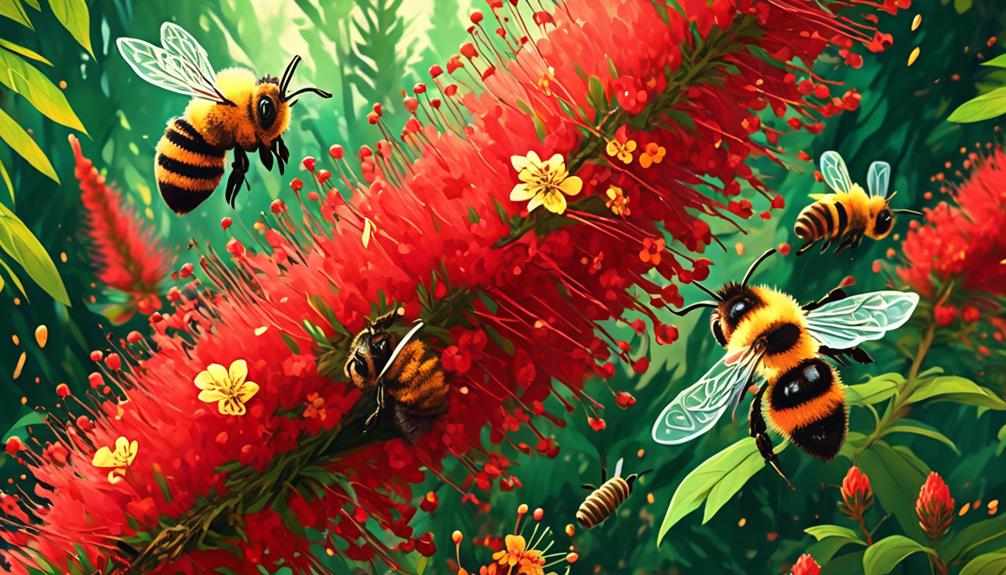
Having understood the broad biological factors that make bees gravitate towards flowers, let's now turn our focus directly onto the unique characteristics of the bottlebrush that make it so appealing to these buzzing pollinators.
The bottlebrush, scientifically known as Callistemon, is a genus of shrubs in the myrtle family. It's named for its vibrant and cylindrical flowers that resemble a bottle cleaning brush. These flowers range from red, pink, to sometimes yellow or green, making them visually appealing, not just to us, but also to bees.
The bottlebrush's flowers bear nectar-rich blossoms, which are a primary food source for bees. They're abundant in sucrose, a type of sugar that bees can easily digest and convert into energy. Additionally, the shrub's elongated flowers provide a large surface area for bees to land, making the extraction of nectar less energy-consuming for these pollinators.
Moreover, the bottlebrush blooms in a pattern that's highly conducive to bee activity. It flowers profusely during spring and summer, when bee populations are at their peak. This synchronicity enhances the plant's attractiveness to bees.
Bees and Bottlebrush: An Unlikely Bond?
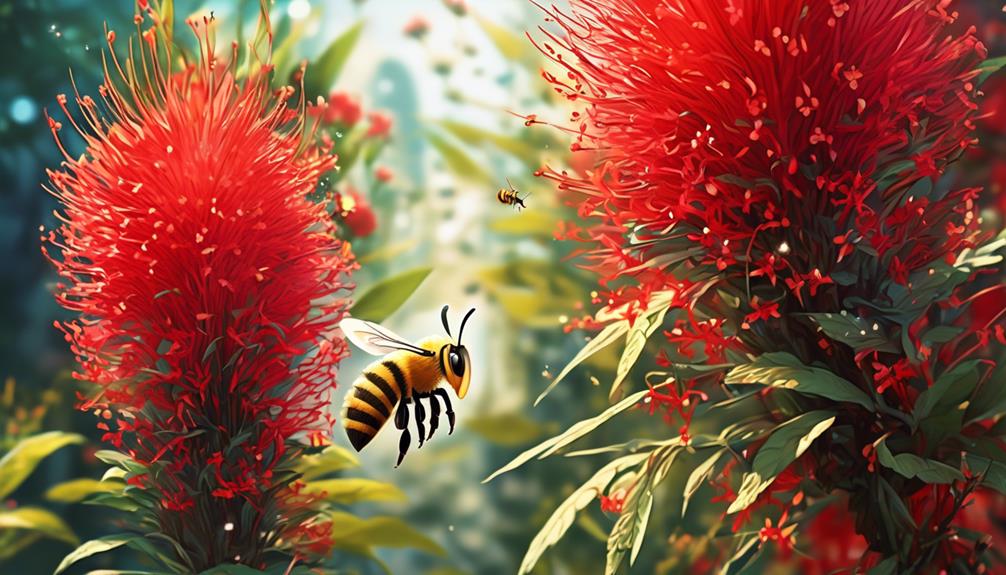
At first glance, you mightn't consider bees and bottlebrushes to be a natural match, but a closer analysis reveals a symbiotic relationship that's both beneficial and fascinating.
Bottlebrushes, with their distinctive cylindrical flower spikes, are aptly named for their resemblance to a cleaning tool. They're not just aesthetically pleasing though; they're actually a prime source of nectar and pollen for bees.
As bees forage, they inadvertently pick up pollen on their bodies and transfer it to other flowers, aiding in their fertilization. This process of cross-pollination is vital for the reproduction of many plants, bottlebrushes included. It's an intricate dance of survival, with each party benefitting the other.
Don't underestimate the importance of this bond. It's not just about honey production or colorful gardens. It's about biodiversity. Ensuring bees have access to a variety of pollen sources, like bottlebrushes, helps support robust hive health. Conversely, the presence of bees encourages the growth and spread of bottlebrush plants.
Scientific Evidence on Bees' Preferences
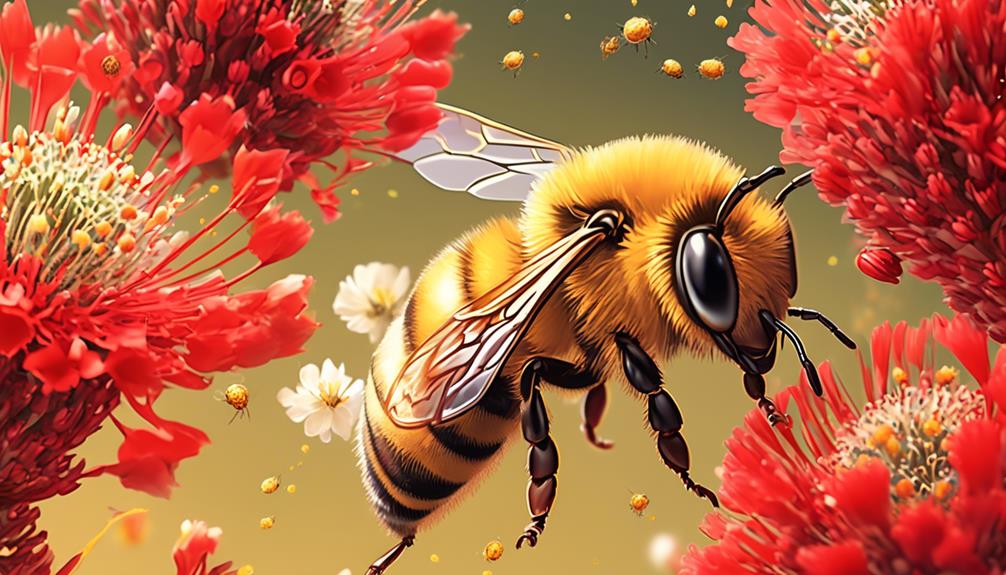
Delving into the scientific aspect, it's important to understand why bees might prefer bottlebrushes over other plants. Studies indicate that bees are primarily attracted to bottlebrushes due to their high nectar productivity. This is particularly true for the Callistemon species of bottlebrush, which is known to produce a significant amount of nectar.
In addition, bees have been found to be more attracted to plants with bright colors and distinct shapes. Bottlebrushes, with their vibrant red or yellow colors and unique cylindrical shape, meet these criteria. Thus, it's not just the nectar that draws bees in, but also the plant's visually appealing characteristics.
Furthermore, bottlebrushes are known for their extended bloom times. This means they provide a consistent source of food for bees, making them a more reliable choice compared to other plants with shorter blooming periods.
However, it's also crucial to note that while bees have shown a clear preference for bottlebrushes, this doesn't mean they exclusively feed on these plants. Bees are opportunistic feeders, meaning they'll explore other food sources when bottlebrushes aren't available. So, while bottlebrushes are definitely favored, they're not the be-all and end-all for bees.
Impact on Gardening and Beekeeping Practices
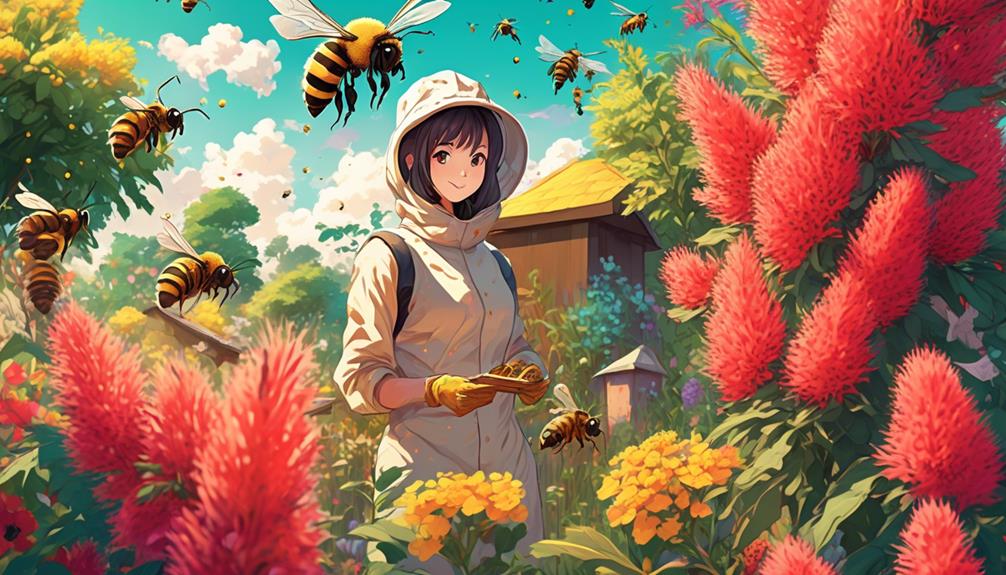
Understanding the preference of bees for bottlebrushes can significantly influence your gardening and beekeeping practices. If you're keen on attracting bees to your garden, the inclusion of bottlebrush plants can make a striking difference. These plants produce copious amounts of nectar and pollen, making them a high-value resource for bees, and thus enhancing your garden's bee-friendliness.
In your beekeeping practices, recognizing this preference can help you site your hives strategically. Placing them near bottlebrush trees can increase their foraging efficiency, leading to a healthier, more productive colony.
Conversely, if your focus is on conserving local plant-pollinator networks, you might want to consider the potential impacts of introducing non-native bottlebrush plants. While they're bee magnets, they could potentially disrupt local pollination dynamics if they outcompete native flora.
Moreover, if you're rearing honey bees, the type of nectar they collect can influence the taste, color, and nutrient profile of the honey they produce. Bottlebrush nectar might yield unique honey characteristics that could add value to your product.
Frequently Asked Questions
What Are Some Other Flowers That Attract Bees Similar to the Bottlebrush?
You're asking about flowers that attract bees, similar to a certain plant. Well, bees are particularly fond of lavender, sunflowers, and cone flowers. They're also attracted to poppies and black-eyed Susans.
These blooms, like your unspecified plant, have bright colors and sweet nectar that bees can't resist. It's important to note that bees tend to favor native plants, so your location might affect which flowers are most effective.
Do Bottlebrush Plants Have Any Negative Effects on the Bee Population?
You're asking if bottlebrush plants have any negative effects on bees. They don't, in fact, they're quite beneficial.
Bottlebrush plants produce nectar and pollen that bees need for survival. The unique brush-like flowers even aid in pollen transfer.
No evidence suggests these plants harm bees. Instead, they provide food and help sustain bee populations. It's a mutually beneficial relationship: bees get nourishment, while bottlebrush plants get pollinated.
Can Bottlebrush Plants Survive and Thrive in Areas With a Cold Climate?
Yes, you can grow bottlebrush plants in areas with a cold climate. However, they're more suited to warmer climates and may struggle in extreme cold.
If you're in a cold region, you'll need to take precautions to protect them from frost. You might want to plant them in a sunny, sheltered spot or use a frost cover.
Are There Any Specific Species of Bees That Are More Attracted to Bottlebrush Than Others?
You're asking if certain bee species prefer bottlebrush plants. Indeed, bottlebrushes attract a variety of bees, including honeybees and native Australian bees.
However, research shows that blue-banded bees are particularly fond of bottlebrush due to its abundance of nectar and pollen. These bees play a key role in their pollination.
It's fascinating how plant and insect species can form such specific relationships, isn't it?
What Are Some Common Predators or Threats to Bees While They Are Gathering Nectar From Bottlebrush Plants?
While you're observing bees gathering nectar from flowers, they're also facing some common predators or threats. Birds, spiders, and other insects may prey on them. Additionally, human activities, like pesticide usage and habitat destruction, pose significant threats.
Bees are also susceptible to various diseases and parasites, like the Varroa mite, that can devastate their populations.
It's a dangerous world out there for these little pollinators.
Conclusion
So, do bees like bottlebrush? Absolutely.
The scientific evidence shows a clear preference among bees for these vibrant blooms. Their particular structure and high nectar content make them irresistible to bees.
Understanding this, you can make informed decisions in your gardening or beekeeping endeavors.
Remember, by planting bottlebrush, you're not just beautifying your garden, you're also providing a valuable food source for our buzzing friends, supporting the vital role they play in our ecosystem.

